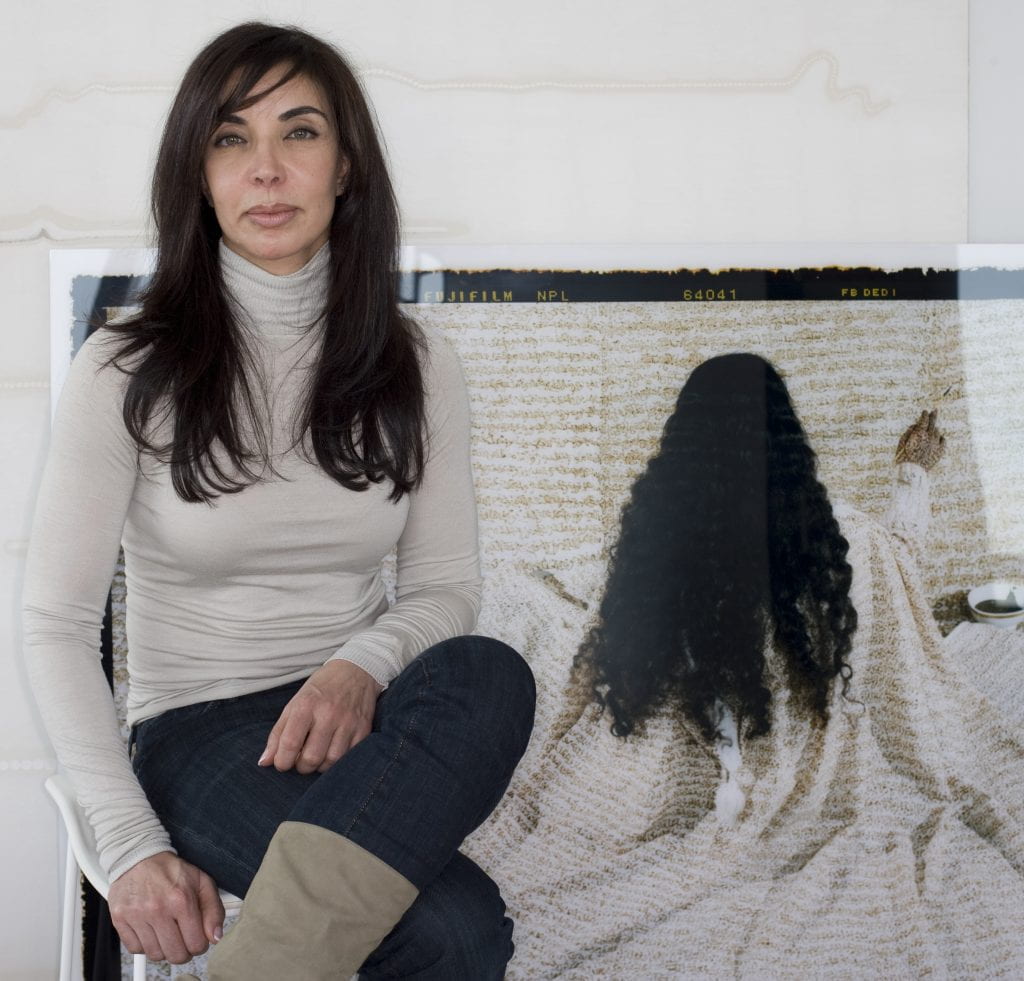In my art I wish to present myself through multiple lenses—as artist, as Moroccan, as Saudi, as traditionalist, as liberal, as Muslim. In short I invite the viewer to resist stereotypes.
Internationally acclaimed artist Lalla Essaydi was born in 1956 in Marakkech, Morocco, in North Africa. Essaydi lived for several years in the Middle East, in Saudi Arabia, and then she traveled to Paris, France, to first formally study painting. In America she earned her Master’s of Fine Arts degree in Painting and Photography, awarded in 2003, at the School of the Museum of Fine Arts, Boston. The artist now travels between studios in New York and Boston, and historic sites in Morocco to carry out her work. The experiences of Arab women are the focus of her creative practice.
Foremost, Lalla Essaydi considers the lives of Arab women in twenty-first century Morocco, her homeland. The artist’s major series, “The Women of Morocco,” or “Le Femmes du Maroc” (French), executed between 2005-2008, is represented by twelve pieces in this show. Throughout her work, Essaydi considers the real-life experiences of Moroccan women, including her own and those of the friends and family represented in her photographs. She compares these to stereotypical images and ideas about Arab women.
The stereotypes that Essaydi responds to were first developed by Europeans, especially the French, who had begun their conquest of North Africa c. 1800 and thereafter established French colonies along Africa’s northern shores. European male fantasies about exotic and alluring native women in the colonies appear widely in European literature, painting, and photography. These subjects are today referred to as “Orientalist,” or belonging to distant, conquered lands that were imagined by European consumers of culture.
Essaydi’s detailed and intricately staged photographs mirror the realistic styles of European Orientalist artists. But Essaydi often turns their passive subjects on end. The direct gazes of many of Essaydi’s subjects challenge assumptions that these Arab women are passive. The veiling and unveiling of women’s faces, heads, and upper bodies question the European fantasy of the sensuous, available Arab woman behind the veil. Women reclining in the intimate spaces of the home—the harem—invite the viewer to reconsider the actual experiences of Arab women. They also question the fantasies of Western male viewers traditionally excluded from these spaces as outsiders.

